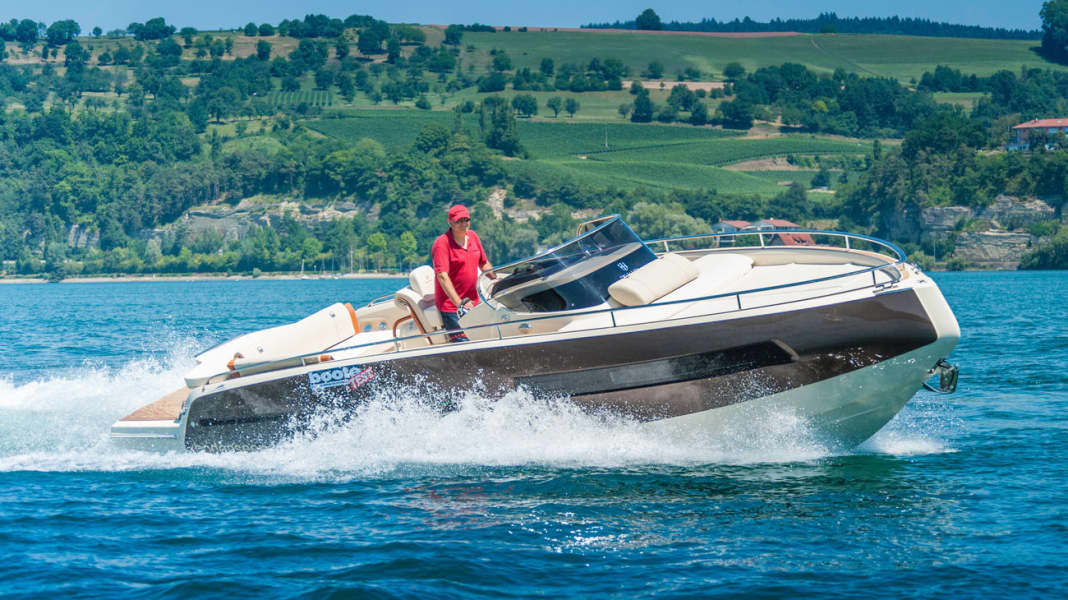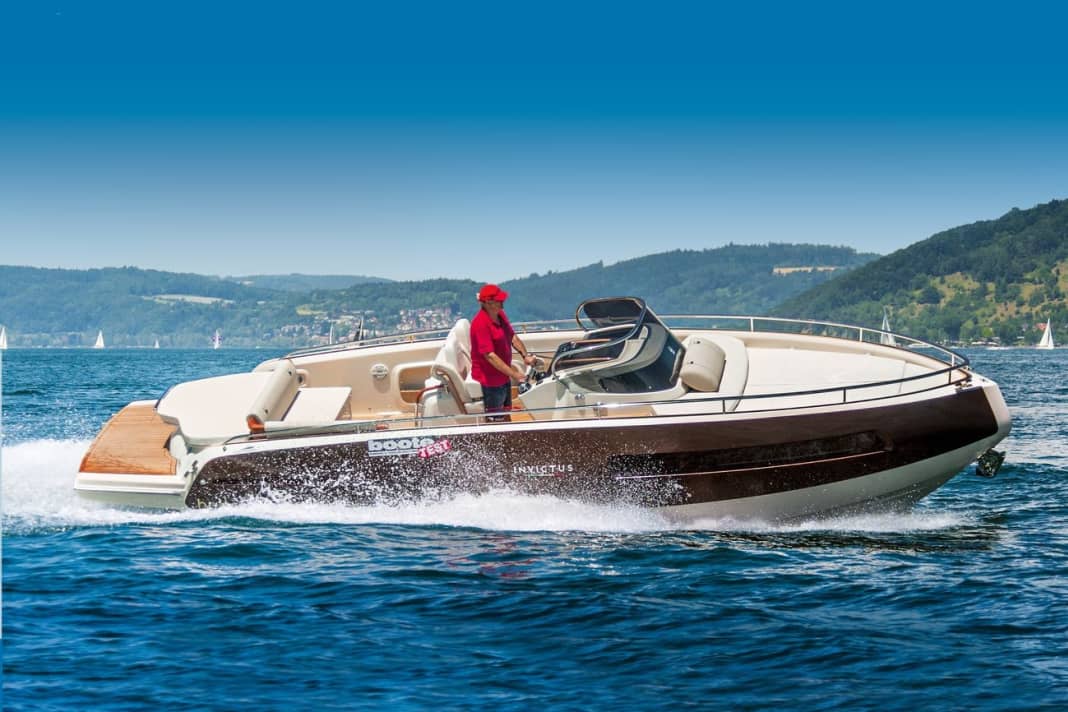
Cabin boats with a large sunbed or seating area in the bow are becoming more and more fashionable. During the day, people enjoy themselves at anchor on theOpen-air stageand in the evening you climb into your cabin and relax after a day in the sun or a voyage of discovery.
A good example of this is our test boat, the Invictus 280GT. In the bow it has ahuge sunbathing lawnwhich can accommodate several people at once.






If you go aft from there, you reach the cockpit via steps. There is aConvertible rear bench and a pantry block integrated behind the driver's seat. On the test boat, it was equipped with a sink, refrigerator and chopping board; instead of the board, the owner is givengrill plate on request.
The highlight: since the shipyard has the driver's seat-pantry blockAs compact as possibleyou have to move the seats forwards electrically to use the sink, for example.
The rear unit is convertible: Here, the backrest is folded down by hand to create an additional sleeping area. One size further to the rear is the largeBathing platform with stern shower and long ladder. The latter is located under a flap and can be easily operated from the water.
If you want to protect yourself from too much sun, stretch theStandard bimini roof which is practically stowed in a recess under the front sun lounger. However, this arrangement means that theHeadroom in the cabin above the convertible seating area is only around 0.76 metres, which forces people over 1.80 metres tall to sit leaning forward.
However, the height is sufficient for sleeping, and the bunk (2.00 x 2.18 m) provides enough space for two adults plus a child to sleep. The upholstery has good firmness
but are not ventilated. Before entering the berth, you enter the vestibule, which has a locker unit on the port side and a wet room with a marine toilet and washbasin on the starboard side. The headroom there is a good 1.50 metres and there is plenty of room to move around in the toilet area.
Driving and manoeuvring
The aforementioned, also firmly upholstered driver's bench offers space for two people; the seats can be folded up. If you drive sitting down, you have to come to terms with the bar above the windscreen, which is more or less in your field of vision depending on the driving position.
If, on the other hand, you ride standing up, you can look over it and are not disturbed. So if you want a sporty ride with the wind in your hair, stand up; if you want a more cosy and sheltered ride, sit on the bench. In both driving positions, the smooth-running single-lever gearstick and the sports steering wheel are easy to operate and the instruments are easy to read.
The gearstick controls a Volvo Penta V8 petrol engine, which produces 300 hp and brings the boat, which weighs no less than 2800 kg, up to a good 35 knots. In the transition phase from displacement to planing speed, the bow lifts only moderately and can be lowered slightly at low planing speed in the 3500 rpm range using the standard trim tabs.
With more throttle, the flaps are raised again, as the bow lowers on its own and the Invictus is finally brought into the optimum position using only the power trim (maximum display value: about ¾).
If you want to cover as much distance as possible with a good planing speed, let the engine run at around 4000 rpm and then cruise across the water at around 23 knots safely, stable on course and also quite quietly at 81 dB(A). In purely mathematical terms, this results in a range of a good 300 nm plus 15 % reserve, which is an extraordinary amount for this type of boat.
The fuselage copes well with fast manoeuvres, and in fast bends, for example, it doesn't matter whether the drive is set to cruise trim or all the way to the transom. In both cases, the fuselage turns in very tight circles, so you have to hold on tight;
The test boat brakes itself automatically, the duoprop always remains positive, and the Invictus accelerates again immediately when leaving the gyro.
The extremely smooth-running power steering is noticeable here - just as it is during the slalom manoeuvre and when tearing the steering. The hull reacts directly to both manoeuvres, but not surprisingly. The 280GT skips over waves created by the White Fleet and sports boats on Lake Constance smoothly and dryly.
At displacement speeds between around 3.5 and 5.5 knots, we register moderate yaw (independent swinging of the bow back and forth). It is best to allow the hull to lean and only counter-steer very slightly, if at all.
Harbour manoeuvres can be carried out precisely with normal turning circles and good reversing behaviour in reverse as well as with the bow thruster (surcharge: 3500 euros). When entering the box, care must be taken not to drive the bow too close to the jetty, as the nose protrudes further forwards than is visible from the driving position.
Technology and equipment
The engine is located under the aft sunbed. The sharp-edged handle for lifting the hatch cuts noticeably into the hands. However, once the cover is opened, a feast for the eyes is revealed underneath: this applies to the professional installations as well as the solid engine foundations and the clean protective coating of the laminate.
The extra fuel filter and stopcock should also be emphasised, as should the main relay switches, which are also designed for manual emergency operation. The only limitation: The fuses under the driver's platform are located behind a flap that has to be removed with tools, making them difficult to access.
The safety equipment with a fire extinguishing system is commendable; however, we searched in vain for a hand bilge pump that also works without electricity.
Four cleats are available for mooring, one rubbing strake was sacrificed for the sake of appearance. Tarpaulin covers protect the driving position and bench seat from rain and UV radiation. The shipyard offers both individual options and four practical equipment packages to meet individual requirements.
Conclusion
The Invictus 280GT is a relaxed way to spend the day on the water. Two adults plus a child can also sleep comfortably on the weekender. It's fun to cruise with the boat and to take someone in tow.
take someone in tow. The workmanship and installations are of a high standard.
This test comes from BOOTE 9/2017
Would you like to have the complete test with all measured values? Then download the PDF below.
Downloads:
download

